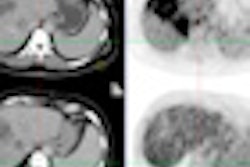Dear AuntMinnie Member,
Radiology professionals are beginning to put the new iPad through its paces for medical imaging use, and for the most part they like what they're seeing.
Apple unveiled the new tablet computer to much fanfare on March 16. Of course, the launch generated a frenzy among consumers, but the new device also is getting medical imaging specialists excited about its potential for improving even further upon the original iPad -- which itself was a major step forward for mobile medical imaging.
At the top of the list of improvements is the new iPad's Retina display, which gives the device the resolution of a 3-megapixel PACS workstation. That will expand the number of modalities that can be easily viewed on the iPad. Also notable are improvements in speed, with an upgrade to 4G networking that will make it even easier to access those large medical image files.
Find out what radiologists are saying about the new iPad -- and what they'd like to see in future updates -- in an article by senior editor Erik L. Ridley in our Advanced Visualization Digital Community. You can reach the story by clicking here, or go to av.auntminnie.com.
Adverse effects of radiation therapy
In other news, radiation therapy has helped millions of patients over the years, saving lives and alleviating suffering. But there can also be a downside to radiation-based treatment: a range of adverse effects after therapy that can include new cancers.
A report on late adverse events related to radiation therapy has just been published, and we're featuring an article on the research in our Radiation Oncology Digital Community. The report describes which types of cancers have higher rates of adverse effects and how event rates are tied to radiation dose levels.
But good news could be coming due to new radiation therapy technologies that are more precise than ever, ensuring that healthy tissue is spared. Learn more by clicking here, or visit the community at radiation.auntminnie.com.
New MedPAC report
Finally, the Medicare Payment Advisory Commission (MedPAC) last week confirmed what's been clear to anyone who follows the medical imaging industry: Procedure volume has been dropping.
In its annual report to the U.S. Congress, MedPAC reported that imaging volume per Medicare beneficiary for 2010 fell by 2.5% compared to the year before. But the commission hardly declared victory in its war on unnecessary imaging utilization; instead, it noted that 2010 utilization levels were still far higher than in 2000.
On the other hand, imaging advocates seized on the decline to point out that the government's efforts to clamp down on imaging use were succeeding, and that further Medicare reimbursement cuts were unnecessary and would hurt access to imaging. Read the rest of the story by clicking here.



















